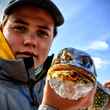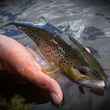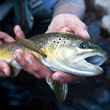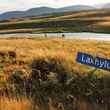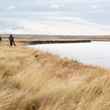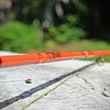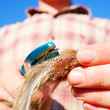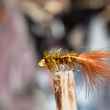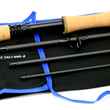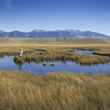The next time you're wading your favorite freestone stream in the warmth of a summer day, and all of the sudden notice a rush of colder water around your legs and ankles, take note. Chances are, you've stumbled on a spring seep and that seep can mark an area where fish will congregate. In summer, that seep and the relatively cooler water it is contributing to the flows of the stream can offer a respite for trout when water temperatures rise.
Finding trout in winter: spring seeps
by Ben Kryzinski - Friday, Feb 13th, 2015



